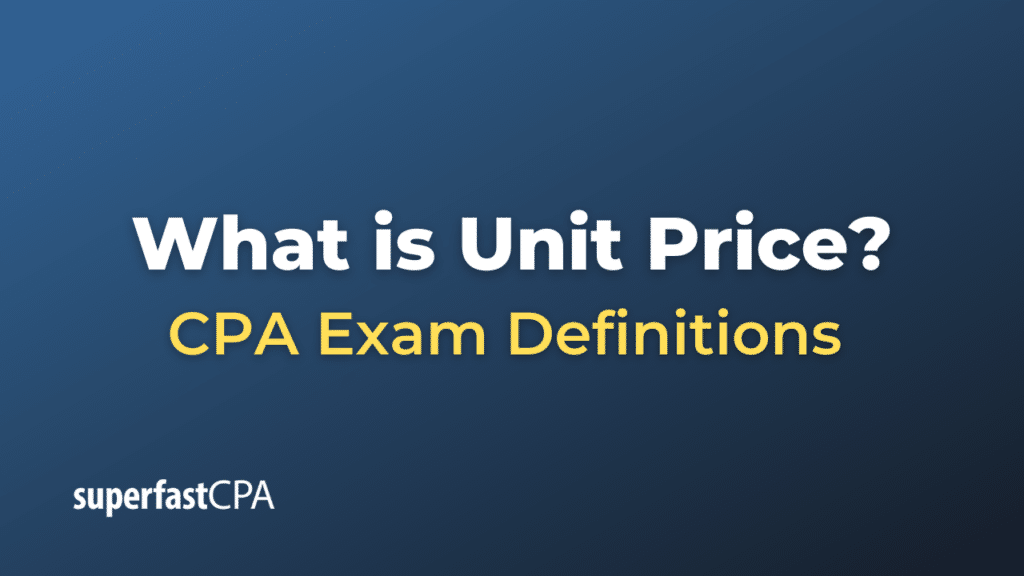Unit Price
The term “unit price” refers to the cost of a single unit of a product or service. It is a standard measure that allows for a consistent and fair comparison of costs between different products, services, or suppliers. The unit price is often used in various settings such as retail, wholesale, and investment analysis to provide a simple and transparent measure for evaluation and decision-making.
In retail, the unit price is often displayed on shelf tags next to the total price for the package. This allows consumers to compare prices across different brands or sizes easily. In financial contexts, the term might refer to the price per share of a stock or mutual fund.
Formula
The formula for calculating the unit price is straightforward:
Unit Price = Total Cost / Number of Units
Importance:
- Cost Comparison: The unit price is essential for comparing costs in a standardized way, helping consumers make informed decisions.
- Budgeting : Knowing the unit price can help in planning and budgeting, as it offers a straightforward way to estimate the cost of various quantities of a product or service.
- Transparency: Disclosing the unit price, especially in sectors like retail, adds an element of transparency that enables consumers to compare and choose products easily.
- Investment Decisions: In financial contexts, understanding the unit price can help investors evaluate the cost-effectiveness of different investment options.
Understanding the unit price is critical for both consumers and investors to make informed, rational decisions. It simplifies complex choices by reducing them to a common unit, allowing for an apples-to-apples comparison.
Example of Unit Price
Let’s consider two examples—one from a retail context and another from an investment scenario:
Retail Example: Comparing Laundry Detergents
Imagine you’re shopping for laundry detergent and you see two options:
- Brand A: A 100-fluid ounce bottle for $10
- Brand B: A 75-fluid ounce bottle for $8
You want to find out which option gives you the best value for your money.
Calculating Unit Price for Brand A:
Unit Price for Brand A = Total Price} / Total Volume = $10 / 100 fl oz = $0.10 per fl oz
Calculating Unit Price for Brand B:
Unit Price for Brand B = Total Price / Total Volume = $8 / 75 fl oz = $0.107 per fl oz
Even though Brand B’s bottle is cheaper overall ($8 vs. $10), Brand A offers a better unit price ($0.10 per fl oz vs. $0.107 per fl oz). Therefore, Brand A gives you more value for each fluid ounce you buy.
Investment Example: Evaluating Mutual Funds
Suppose you are looking at two mutual funds for investment:
- Mutual Fund X with a Net Asset Value (NAV) of $50 per share
- Mutual Fund Y with a Net Asset Value (NAV) of $75 per share
Here, the unit price is the NAV, which tells you the cost of purchasing a single share of the mutual fund.
If you have $1,000 to invest:
- For Mutual Fund X: You can buy 1000 / 50 = 20 shares.
- For Mutual Fund Y: You can buy 1000 / 75 ≈ 13.33 shares, but in practical terms, you might be able to buy only 13 shares, leaving some cash uninvested.
In this case, the unit price (NAV) will help you understand how many shares you can buy with your available funds. However, it’s crucial to note that a lower NAV doesn’t necessarily mean that Mutual Fund X is a better investment. Other factors like performance, fees, and your investment strategy should also be considered.
Both examples demonstrate how unit price can be a useful tool for making informed decisions, whether you’re shopping for everyday items or making significant financial investments.













